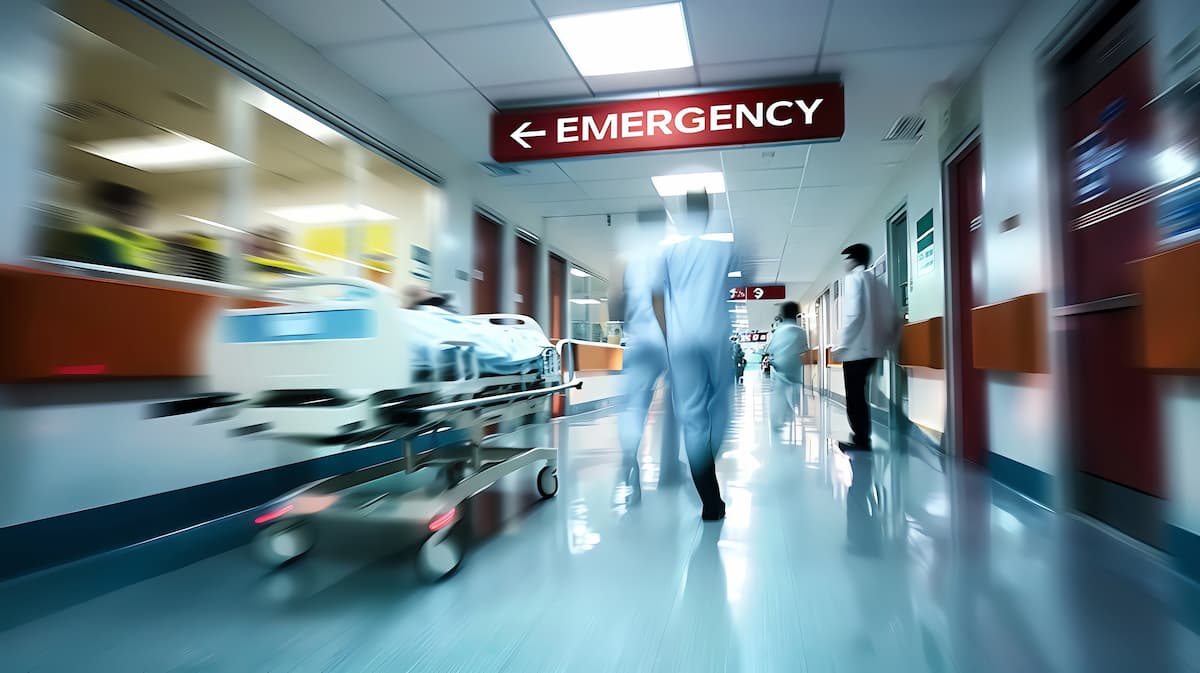Did you know that for every minute of delay in responding to a Code Blue, survival rates can drop by 7–10%? In these situations, there’s no time to search for information or second-guess a medication. That’s why strategically placed pre-printed emergency labels in key areas, from crash carts to treatment rooms, are essential to rapid, coordinated care.
Seconds Count in Emergency Scenarios
Whether it’s a patient in cardiac arrest, an animal in respiratory distress, or a sudden trauma case, rapid response workflows are essential. In these high-pressure moments, clear, standardized communication tools like pre-printed emergency labels play a crucial role in minimizing delays, reducing errors, and keeping the entire team aligned.
What Are Pre-Printed Emergency Labels?
Pre-printed emergency labels are ready-to-use identification tools designed for immediate application in preparation for and during emergencies. They quickly identify life-saving medications, equipment, and supplies, providing instant clarity when every second matters.
Key Difference From Handwritten Labels:
Although handwriting instructions may seem practical, the potential errors it can cause in hospital emergency departments can have serious consequences. Handwriting is prone to legibility issues and can slow down workflows. Pre-printed versions provide instant clarity, uniform appearance, and consistent messaging, all of which are essential in high-stress environments.
Key Benefits of Using Pre-Printed Emergency Labels
Pre-printed emergency labels provide a number of benefits:
Reduces handwriting errors and misinterpretation
- Illegible or unclear handwriting can delay treatment and cause dangerous mistakes.
- Standardized, pre-printed text ensures critical instructions are unmistakable.
Accelerates medication preparation and administration
- Emergency medications often require preparation and delivery within seconds. Pre-printed labels make it faster to identify, verify, and administer the right drug at the right time.
Improves communication during shift handoffs
- In both human and veterinary care, patients often transition between care teams. Labels act as a visual signal, instantly communicating urgency to incoming staff.
Enhances workflow efficiency
- By removing the extra step of handwriting and reducing the risk of confusion, labels keep ER, ICU, and surgery teams focused on patient care.
Promotes standardization and reduces cognitive load
- In high-stress situations where decisions must be made in seconds, clear, universally recognized labels enable staff to act without hesitation.
Veterinary Use Cases: When Every Second Counts for Animals
Veterinary emergencies demand the same urgency as human care. Pre-printed labels can be lifesaving in:
- Emergency surgeries - Ensuring the right anesthesia or medication is administered without delay
- Crash carts - Quick identification of urgent-use drugs including Epinephrine, atropine, lidocaine and more.
- Specimen draws - Accurately identifying samples to ensure proper testing and chain of custody.
These labels support protocols by helping reduce stress, streamline decision-making, and keep the team organized during chaotic situations.
Human Healthcare Examples: STAT and Code Labeling in Action
In hospitals, pre-printed emergency labels are integral to rapid response systems:
- STAT medications - Instantly identified for immediate preparation and delivery
- CODE BLUE events - Nursing 2025 defines six key roles for handling a Code Blue event, from airway manager to crash cart operator. Pre-printed labels assist crash cart operators in rapidly locating necessary medications for patients.
- Joint Commission readiness - Hospitals need to implement and adhere to established protocols for managing emergency situations. Standardized labeling supports these compliance standards.
Choosing the Right Emergency Labels for Your Facility
Selecting the right labels starts with understanding how and where they’ll be used:
- Match Format to Use Case - Labels required for vials, syringes and IV bags differ. Make sure you’re prepared with the format that meets each requirement.
- Address Look-Alike-Sound-Alike (LASA) risks - drugs including Epinephrine confused with Ephedrine, Amiodarone confused with Amantadine and Dopamine confused with Dobutamine are just a few examples of LASA drugs that are stored on a Crash Cart. Improving awareness of look-alike-sound-alike drugs and applying LASA labels can help prevent dangerous mix-ups during high-pressure situations.
- Customize When Needed - While many emergency labels are available in standard formats, internal protocols may require custom options. UAL’s Custom Label Designer makes it easy to create labels tailored to your needs.
- Plan for Inventory Management - Keep labels stocked in crash carts, treatment rooms, and triage areas so they are always ready when an emergency occurs.
A Small Label That Makes a Big Impact
Even the best-trained team works faster and safer when the tools they need are clearly marked and within reach. Pre-printed emergency labels standardize urgent messages, reduce delays, and support rapid decision-making, all of which help save lives in both human and veterinary care.
Audit your emergency labeling system today to ensure your facility has the right labels in the right places for the moments that matter most. Contact United Ad Label to explore pre-printed emergency label solutions that fit your team’s needs and help you prepare for any critical situation.
